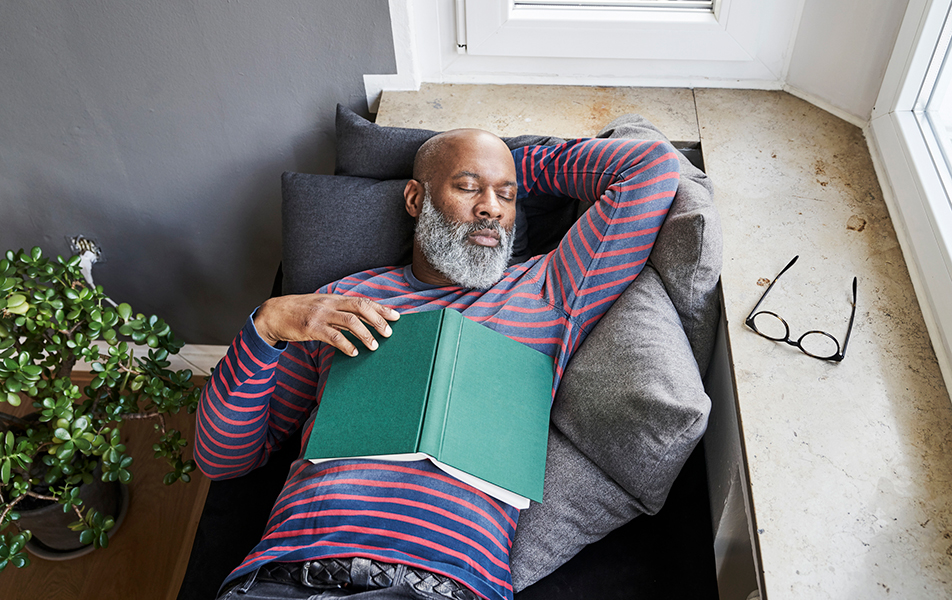
Do a quick search for “famous nappers” and you’ll find some impressive results. Leonardo da Vinci allegedly took 15-minute naps every four hours. Bill Clinton, Thomas Edison, Margaret Thatcher, Aristotle, Winston Churchill, Beethoven and JFK all believed in a quick rest during the day. Albert Einstein was known to squeeze in naps on top of sleeping 10 hours each night. So, are the naps the key to health and better performance? We asked Aaron Roberts, MD, PPG – Sleep Medicine, to explain.
Why people nap
As the great author George R.R. Martin eloquently states, “A napper lives a thousand lives before he dies. The man who never naps lives only one.” When it comes to normal sleep patterns, the large majority of mammals sleep for short periods throughout the day. Humans are one of the few exceptions that split their day into two distinct periods of wakefulness and sleep. Whether or not this is supposed to be our natural cycle is up for debate, since it is seen as normal for the young (up to age 5) and elderly to require a nap.
Any parent will tell you that if their toddler does not get their afternoon nap, then no one in the house is going to be happy. Many countries in the world take advantage of the natural dip in our circadian rhythm (internal clock) with a siesta after lunch. While napping when tired may seem like a good idea at the time, it can also backfire on you.
The benefits of naps
Naps can significantly boost energy and alertness. A well-known study done at NASA in 1995, showed that a 26-minute nap improved performance in sleep deprived astronauts by 34 percent and alertness by 54 percent. Companies such as Google have taken note of lost productivity from sleepy employees and have created nap pods for workers to grab a quick, restorative cat nap. From the moment a person wakes up in the morning, the body starts to accumulate sleep-promoting substances in the brain, and the only way to get rid of them is by sleeping.
This homeostatic process, called Process S, interacts with our circadian rhythm to create a sleep/wake schedule. Of course, these processes can be affected by external factors such as light exposure, chemicals, exercise, stress and social cues, but for the most part, they keep us waking up at the same time every morning and feeling drowsy at the same time every night.
Naps can also be used to treat certain disorders, like narcolepsy or shift work disorder. Narcolepsy is a neurological disorder characterized by excessive daytime sleepiness and sudden sleep attacks. Shift work disorder is another sleep disorder marked by sleepiness, where a person’s work schedule overlaps the typical sleep time. Both can be debilitating if not properly treated. While many people will try to overcome their sleepiness with stimulants, such as caffeine, it is no substitute for the restorative power of sleep. In fact, a study was done comparing caffeine with naps on memory processing and found there was no competition. While both seemed to improve perceptual learning compared with placebo, caffeine was inferior to naps in verbal memory and significantly impaired motor learning.
The negative side of naps
While naps may seem like the bee’s knees, they can also cause problems, if not practiced properly. Napping too late in the day can push a person’s sleep drive back and make it harder to fall asleep when it is time to lay down and go to bed later. It is not recommended for people with chronic insomnia, as this will worsen the condition. Sometimes, napping for too long will lead to more drowsiness/grogginess upon awakening than before the nap. This transition period from sleep to wakefulness is called “sleep inertia” and is usually seen with naps greater than 30 minutes.
The perfect nap
So, how long is the recommended nap length and when should a nap be taken? Ideally, a power nap should be taken between 1 and 3 p.m. and last anywhere from 15 to 30 minutes in length. It is OK to consume caffeine right before a nap, but if you wait too long this will hinder your ability to fall asleep.
The typical sleep cycle usually runs close to 90 minutes, starting with the lighter stages of sleep and moving to the deeper slow wave sleep. Sleep inertia is much more common when someone is awoken during slow wave sleep which is the risk of taking a longer nap. While obtaining a 90-minute nap during the day may help with memory consolidation, shorter naps are better utilized to help recover from fatigue.
Key takeaways
One of the best ways to remove the stigma surrounding naps is by understanding the serious health consequences of sleep deprivation. The National Sleep Foundation (NSF) recommends 7-9 hours of sleep per night for adults although less than 40 percent of Americans report reaching that amount. If you find yourself chronically sleep deprived, consider adding a strategic nap to your routine. Just be sure to limit how long you nap by setting an alarm and be aware that taking a nap too late in the day can affect your sleep later.
Finally, I leave you with a quote from the late civil rights activist Barbara Jordan, “Think what a better world it would be if we all, the whole world, had cookies and milk about three o'clock every afternoon and then lay down on our blankets for a nap.”



